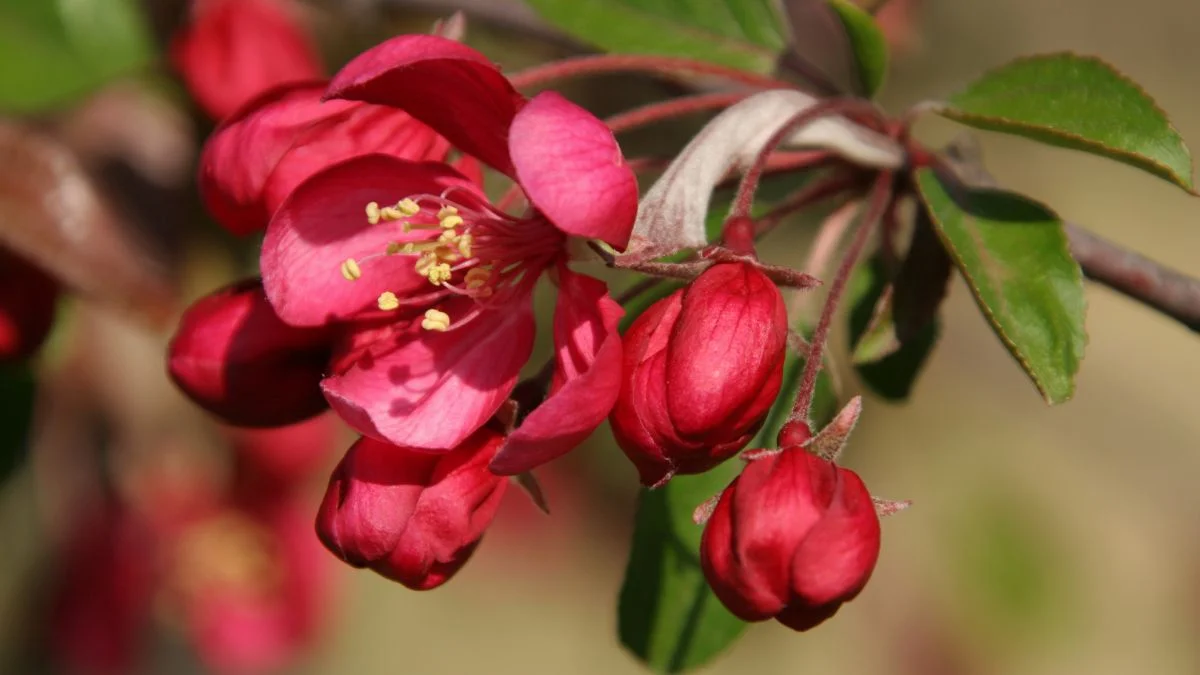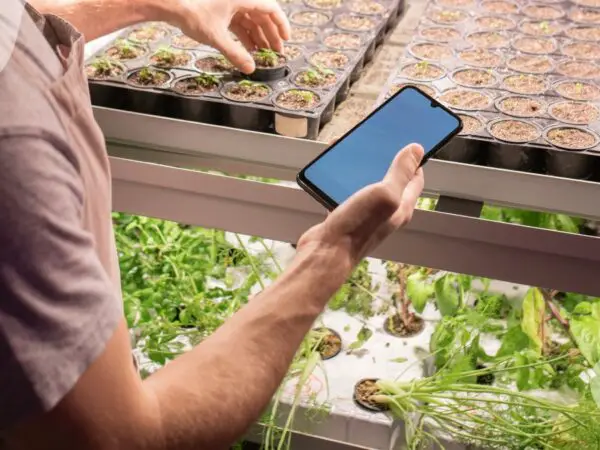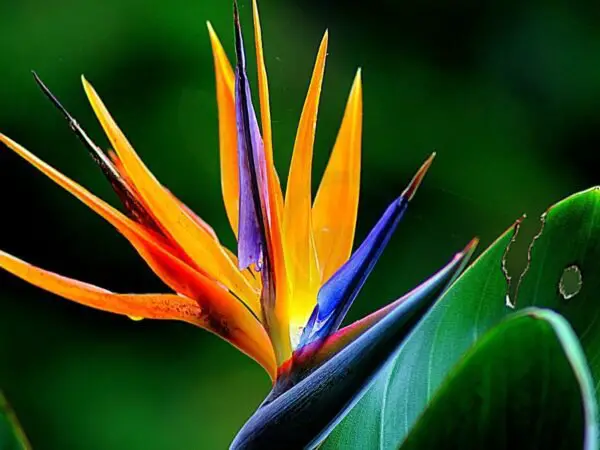Curious about the enchanting bloom of crabapple trees? Wondering when these stunning trees burst into a colorful display? The timing of crabapple tree blossoms is a captivating natural phenomenon that many eagerly anticipate each year. Discovering the precise moment when these trees come alive with vibrant hues can add a touch of magic to your outdoor experience. So, when exactly do crabapple trees grace us with their breathtaking blossoms?
Key Takeaways
- Understand when crabapple trees bloom by considering the variety, flowers, and environmental factors.
- To prepare for optimal blooming, ensure proper sunlight, soil conditions, and pruning practices.
- Use effective propagation techniques like grafting or seed planting to propagate crabapple trees.
- Maintain healthy trees through regular watering, fertilizing, pest control measures, and care.
- Promote vibrant blooms by providing adequate nutrients and addressing any nutrient deficiencies.
- Address growth challenges promptly by identifying and treating diseases or pests affecting the tree.
Understanding Crabapple Blooms
Factors Affecting Blooming
Environmental conditions such as temperature and sunlight play a crucial role in determining when crabapple trees bloom. Variations in these factors can influence the timing of blooming. For example, warmer temperatures tend to accelerate the blooming process.
The weather conditions during spring, particularly frost events, can significantly impact the blooming period of crabapple trees. Late frosts can damage the delicate buds, delaying or reducing the bloom. This highlights the vulnerability of crabapple blooms to sudden weather changes.
The type of crabapple tree also affects its blooming time. Different varieties have distinct characteristics that determine when they bloom. Some varieties may bloom earlier in the season, while others may wait until later, showcasing the diversity in bloom times among crabapple trees.
Blooming Season Overview
Typically, crabapple trees start to bloom in early spring, usually around April to May depending on various factors like location and weather conditions. However, this timeline can vary each year due to environmental influences, making it challenging to pinpoint an exact blooming period.
The variability in bloom time is influenced by factors such as temperature fluctuations and precipitation levels. These variations can cause some trees to bloom earlier or later than usual, adding an element of unpredictability to the blooming season.
Predicting the exact bloom time each year poses a challenge for enthusiasts and researchers alike. While general timelines exist based on historical data, the interplay of environmental factors makes it difficult to forecast with precision when a specific tree will bloom.
Tree Maturity and Blooms
The age of a crabapple tree impacts its blooming pattern significantly. Younger trees may take longer to establish themselves before producing abundant blooms consistently. As trees mature, they develop stronger root systems and branches that support more prolific blooming.
Tree maturity directly influences how often a tree blooms throughout the season. Mature trees tend to produce more flowers compared to younger ones due to their established growth patterns and nutrient uptake capabilities. This correlation underscores the importance of allowing crabapple trees to reach full maturity for optimal blooming results.
Types of Crabapple Trees
Various types of crabapple trees exist, each with unique characteristics that define their blooming behavior. For instance, 'Sargentii' variety typically blooms early in spring, while 'Prairifire' may flower later in the season. Understanding these distinctions helps predict when different types of crabapples will bloom.
Knowing the specific type of crabapple tree you have can aid in anticipating its blooming period accurately. By recognizing the typical blooming times associated with different varieties, enthusiasts can better plan garden arrangements or appreciate a diverse range of blooms throughout the season.
Preparing for Optimal Blooming
Planting Basics
When planting a crabapple tree, ensure the buds are healthy and intact. Choose a planting spot with well-draining soil. Water regularly to establish strong roots. Provide adequate spacing between trees for optimal growth. Mulch around the base to retain moisture.
To achieve successful blooming, plant your crabapple tree in full sun. This ensures that the buds receive sufficient sunlight to develop into vibrant blooms. Proper air circulation is essential for preventing diseases that can affect bloom production. Prune any overcrowded branches to promote airflow.
Proper planting techniques are crucial for healthy blooms on crabapple trees. Ensure the soil is nutrient-rich by adding compost or fertilizer during planting. Water deeply but infrequently to encourage deep root growth. Regularly check the moisture levels of the soil to prevent overwatering or underwatering.
Sunlight and Nutrients
Sunlight plays a vital role in stimulating bud development and blooming on crabapple trees. Position your tree in an area that receives at least six hours of direct sunlight daily. Insufficient sunlight can lead to poor bloom production and overall tree health issues.
For healthy bloom development, crabapple trees require essential nutrients such as nitrogen, phosphorus, and potassium. Fertilize your tree in early spring before new growth appears using a balanced fertilizer. Avoid excessive fertilization, as it can lead to excessive foliage growth at the expense of blooms.
Optimizing sunlight exposure and nutrient levels is key to ensuring abundant blooms on your crabapple tree. Regularly monitor the tree's growth and adjust sunlight exposure if needed by pruning nearby branches or adjusting shading structures. Conduct soil tests periodically to determine any nutrient deficiencies and address them promptly.
Pruning Practices
Pruning is essential for promoting blooming on crabapple trees by removing dead or diseased branches that can hinder bloom production. Prune during late winter or early spring before new growth begins to shape the tree and encourage bud development.
The best pruning techniques for crabapple trees involve removing water sprouts, crossing branches, and any dead or damaged wood. Use sharp, clean tools to make precise cuts near the branch collar without leaving stubs. Avoid heavy pruning, as it can reduce blooming potential for the following season.
Knowing when and how to prune your crabapple tree is crucial for optimal bloom production. Prune annually after flowering has finished to avoid cutting off next year's flower buds inadvertently. Focus on shaping the tree while maintaining its natural form to support healthy bloom development.
Propagation Techniques
Seed Planting
Planting crabapple seeds involves placing them in a moist, well-draining soil at a shallow depth. Water regularly to keep the soil consistently damp. Over time, the seeds will germinate and develop into seedlings.
The timeline from seed planting to blooming can vary. On average, it takes about 3-5 years for crabapple trees grown from seeds to start blooming. This method requires patience but can result in unique variations.
Benefits of growing crabapples from seeds include the excitement of watching the tree grow from its initial stages. However, challenges such as potential genetic variability leading to unpredictable characteristics may arise.
Grafting Methods
Grafting techniques for crabapple trees include whip and tongue grafting, cleft grafting, and bark grafting. Each method involves joining a scion (desired variety) with a rootstock (strong root system).
Grafting influences blooming patterns by ensuring that the desired variety's traits are preserved. It allows for controlled growth and specific flower characteristics, enhancing the overall aesthetic appeal of the tree.
Using grafting methods for desired blooms offers advantages like faster blooming times and consistent flower quality. It also enables growers to replicate successful varieties with precision.
Stem Cutting
Stem cutting involves taking a healthy crabapple branch, typically 6-8 inches long, and planting it in a rooting medium. Ensure the medium is well-draining yet retains moisture to support root development.
By utilizing stem cutting, you can potentially influence the blooming time of crabapple trees. This method often results in quicker bloom production compared to growing from seeds or traditional grafting techniques.
To succeed in stem cutting for optimal bloom production, choose branches with vigorous growth, make clean cuts at an angle below a node, and provide adequate humidity levels during the rooting process.
Maintenance for Healthy Trees
Watering and Fertilizing
Proper care of crabapple trees is crucial for healthy blooms. Watering and fertilizing play a significant role in ensuring optimal blooming. Adequate watering is essential to maintain soil moisture levels, especially during dry periods. Overwatering can lead to root rot, affecting bloom quality. Fertilizing should be done in early spring before new growth appears. Use a balanced fertilizer to provide essential nutrients for blooming.
- Water regularly: Crabapple trees need consistent moisture, especially during the growing season.
- Fertilize strategically: Apply fertilizer in early spring to support healthy bloom development.
- Impact of water and nutrients: Proper watering and fertilizing directly impact the tree's ability to produce vibrant blooms.
Pest and Disease Management
Common pests like aphids and diseases such as apple scab can hinder blooming. Preventive measures are key to maintaining healthy crabapple trees. Regularly inspect the trees for signs of pests or diseases. Use natural remedies or insecticidal soaps for pest control. For disease management, prune infected branches and ensure good air circulation around the tree.
- Identify pests and diseases: Recognize common issues like aphids and apple scab that can affect blooming.
- Preventive measures: Regularly monitor tree health and take preventive actions against pests and diseases.
- Solutions for management: Use organic methods or targeted treatments to address specific pest and disease problems.
Preventing Common Issues
Several factors can impede blooming, including improper pruning or inadequate sunlight exposure. To prevent common blooming issues, ensure proper tree maintenance practices. Prune the tree annually during the dormant season to remove dead or diseased branches. Adequate sunlight is essential for bloom formation, so plant crabapple trees in locations with full sun exposure.
- Addressing common issues: Understand potential obstacles like improper pruning that may affect bloom production.
- Proactive strategies: Implement regular pruning and ensure adequate sunlight exposure to prevent blooming challenges.
- Importance of early intervention: Detecting issues early on allows for timely corrective actions to maintain healthy blooms.
Promoting Vibrant Blooms
Encouraging Flowering
To encourage blooming in crabapple trees, ensure they receive adequate sunlight, at least six hours daily. Prune during late winter to early spring to stimulate new growth and flower buds.
Incorporate a balanced fertilizer in early spring to provide essential nutrients for robust flower production. Water consistently, especially during dry periods, to support healthy blooming.
Actively encouraging flowering not only enhances the aesthetic appeal of your garden but also attracts beneficial pollinators like bees and butterflies.
Solutions for Blooming Problems
For common blooming issues, consider thinning out crowded branches to improve air circulation around the tree. Inspect for signs of pests or diseases that may hinder blooming and treat promptly.
If facing sparse blooms, try hand-pollinating flowers with a soft brush to aid pollination. Ensure proper pruning practices to remove dead wood and encourage new growth.
Troubleshooting methods involve identifying underlying issues such as nutrient deficiencies or improper care practices. By addressing these problems promptly, you can restore healthy blooming in your crabapple trees.
Preventing Fruit Drop
Fruit drop in crabapple trees can result from factors like inadequate pollination, extreme weather conditions, or pest infestations. To prevent fruit drop during blooming, ensure proper cross-pollination by planting compatible varieties nearby.
Maintain consistent watering throughout the growing season to support fruit development and minimize premature dropping. Implement a regular inspection routine to identify any signs of disease or pest damage early on.
Addressing Growth Challenges
Fighting Pests and Diseases
Crabapple trees are susceptible to pests and diseases that can hinder their blooming. Implement integrated pest management by regularly inspecting for signs of pests like aphids or fungal diseases. Use natural remedies like neem oil or insecticidal soap to combat these issues effectively.
- Pros:
- Environmentally friendly solutions
- Minimizes the use of harsh chemicals
Identifying common pests such as apple scab or powdery mildew is crucial for early intervention. Prune affected areas promptly and ensure proper air circulation around the tree to prevent disease spread.
Solving Drooping Leaves
Drooping leaves in crabapple trees can impact their blooming potential. Examine the tree for factors like overwatering, nutrient deficiencies, or root rot causing leaf drooping. Adjust watering schedules, provide balanced fertilization, and ensure well-draining soil to address these issues effectively.
- Cons:
- Requires regular monitoring
- May take time to see improvements
Prevent drooping leaves by maintaining optimal growing conditions such as adequate sunlight exposure and proper drainage. Regularly check for signs of stress in the tree and adjust care practices accordingly.
Managing Stunted Growth
Stunted growth in crabapple trees can hinder their ability to bloom vibrantly. Factors like poor soil quality, inadequate sunlight, or improper pruning techniques can contribute to stunted growth. Improve soil fertility with organic amendments, prune strategically to encourage new growth, and relocate the tree if necessary to a sunnier spot for better blooming results.
- Tips:
- Conduct soil tests regularly
- Consult with a local arborist for expert advice
Promote healthy growth by providing consistent care throughout the year, including watering during dry spells and mulching to retain moisture. Encourage strong root development through deep watering sessions rather than frequent shallow watering.
Selecting the Right Crabapple Tree
For Colorful Blooms
When it comes to enhancing the vibrancy of crabapple blooms, consider selecting varieties known for their intense colors. Planting in full sun and providing adequate watering can also boost bloom color. Pruning in late winter helps maintain a healthy tree structure for optimal blooming.
To achieve colorful blooms in the garden, ensure your crabapple tree receives sufficient sunlight and well-draining soil. Regular fertilization with a balanced formula rich in nitrogen promotes robust growth and vibrant blossoms. Deadheading spent flowers encourages continuous blooming throughout the season.
Specific care practices such as proper pruning to remove dead or diseased branches and ensuring good air circulation around the tree are essential for promoting colorful blooms. Mulching around the base helps retain moisture and regulate soil temperature, supporting healthy flower development.
For Fruit Production
Maximizing fruit production in crabapple trees involves selecting self-pollinating varieties or planting multiple trees for cross-pollination. Adequate spacing between trees allows for better airflow, reducing disease incidence and promoting fruit set. Regular pest control measures help protect developing fruits.
Factors influencing fruit yield during the blooming season include weather conditions during pollination, availability of pollinators, and tree health. Watering consistently during dry periods and applying organic mulch around the base help maintain soil moisture levels critical for fruit development.
To promote fruit development for a bountiful harvest, consider thinning excess fruits early in the season to allow remaining fruits to grow larger and sweeter. Applying a balanced fertilizer in early spring supports healthy growth and enhances fruit quality. Pruning to improve light penetration into the canopy aids in fruit ripening.
For Landscape Beauty
Enhancing landscape beauty with crabapple blooms involves selecting varieties with different bloom times to extend the flowering period throughout spring. Mixing crabapple trees with other flowering shrubs or perennials creates dynamic color contrasts and visual interest in the garden.
The aesthetic appeal of crabapple trees in garden design lies in their diverse flower colors, leaf shapes, and attractive bark textures that add year-round interest. Incorporating underplantings of bulbs or groundcovers beneath crabapple trees creates layered beauty and seasonal variation in the landscape.
Creative ideas for incorporating crabapple trees for visual impact in landscaping include using them as focal points in mixed borders or as specimen trees in lawn areas. Grouping different varieties together creates a stunning display of varying bloom colors and forms, enhancing overall garden aesthetics.
Final Remarks
After delving into the intricacies of crabapple trees and their blooming patterns, you now possess the knowledge needed to nurture these beautiful trees successfully. By understanding the factors influencing their growth, preparing them adequately, and implementing proper maintenance techniques, you can ensure vibrant blooms year after year. Remember to select the right tree variety that suits your preferences and environment to maximize your blooming success.
Now it's time to roll up your sleeves and apply these insights to cultivate stunning crabapple blooms in your garden. Take proactive steps in caring for your trees, from propagation to addressing growth challenges, and watch as your efforts yield colorful rewards. Share your newfound wisdom with fellow gardening enthusiasts and continue exploring ways to enhance your green thumb skills.
Frequently Asked Questions
When is the best time to expect crabapple trees to bloom?
Crabapple trees typically bloom in early spring, usually around April or May, depending on the specific variety and local climate conditions.
How can I promote vibrant blooms on my crabapple tree?
To promote vibrant blooms, ensure your tree receives adequate sunlight, water, and nutrients. Pruning in late winter can also help improve air circulation and flower production.
What are some common challenges in the growth of crabapple trees?
Common challenges include pests like aphids and diseases such as apple scab. Proper maintenance practices like regular pruning and monitoring for issues can help address these challenges.
How do I choose the right crabapple tree for my garden?
When selecting a crabapple tree, consider factors like size, flower color, disease resistance, and fruit characteristics to ensure it fits well with your garden space and desired aesthetic.
Is there a specific technique for propagating crabapple trees?
Propagation techniques for crabapples include grafting or taking hardwood cuttings. It's essential to follow proper procedures and timing to increase the chances of success when propagating these trees.
Image Source: Paid image from CANVA





